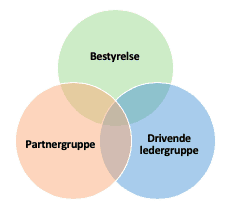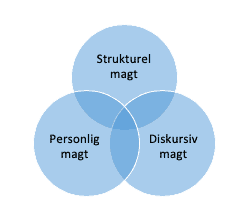Management teams on the agenda
In recent years, the critical importance of leadership teams to the success and performance of organizations has received much more attention. However, partner-driven businesses, where there is often a full or partial overlap between the board, partner group and the day-to-day management team, often face a number of unique challenges. Part of the solution is clear clarification of the role and mandate of the different groups, as well as a clear shared direction that all parties feel committed to and that is supported by the organization's practices, culture and reward systems.
Align the interaction between the different management teams
In partner-driven businesses, a key success factor is the ability to get the board, partner group and day-to-day management team to work well together and pull in the same direction. An important first step is to jointly formulate a common direction and align the mandates and responsibilities of the different management teams. Then it's crucial to create buy-in to the shared direction through agreements and performance targets, and last but not least, to create a supportive organizational practice and culture.
In many partner-driven companies, the lack of alignment of the organization's soft and hard practices is one of the main reasons why joint efforts become nothing more than talk. These practices often directly or indirectly undermine the common direction and create conflicts of interest between the organization's different leadership teams. There is little point in agreeing and committing to a common direction if organizational practices work against achieving it.
Support a good interaction between the company's board, partner group and executive management team by
- Create a shared picture of the desired direction
- Commit to each other on the set direction
- Align KPI, organizational practices and culture to support the desired direction
- Continuously align roles, responsibilities and mandates between management teams
Map interfaces and agree guidelines for collaboration

LEADERSHIP IN PRIVATE COMPANIES
Get a tailored program that solves the challenges you face now - and in the future
We help you drive business results by developing your leadership capacity, speed and flexibility. We do this by drawing on new research-based knowledge of what works, combined with many years of experience with results-driven leadership in other private and public companies.
Clarify expectations on roles and mandate
In order to maintain the good interaction and common direction, the different management teams must continuously align expectations, responsibilities, roles and mandates with each other. This is so that challenges are discussed before they get out of hand. This can be done based on the Leadership Pipeline theory, where the basic points are that what good leadership is depends on what you are a leader for, and that a strong leadership pipeline requires clearly aligned roles and responsibilities at all levels of management. Last but not least, it's crucial to map out the leadership space and interfaces between the different leadership groups and create concrete guidelines for collaboration and how to avoid "stepping on each other's toes".
Clarify expectations between the board, partner group and executive leadership team. Discuss the following:
- What is our central task and responsibility in relation to the jointly formulated direction?
- What do we need to do more of, less of and new things ourselves in order to succeed together?
- What are our key expectations of each other - what do we need them to do more of, less of and new?
Italicize power and make it productive
In organizations, power is a basic condition, and in partner-driven businesses, power balances are extra complex and delicate because there is often a partial overlap between the board, partner group and the day-to-day management team. One way to address inappropriate power struggles and political games is to expose power so that it becomes clear and transparent. Power doesn't disappear because you don't articulate it - on the contrary! If power is articulated and put on the table, it is more likely to be productive rather than a destructive force.
The dialog about power can, for example, be based on the basic question; how is the power in our company distributed? And how can we ensure that power becomes a productive rather than a destructive force? Such a dialogue can advantageously be based on the power triangle as a helpful analytical tool that ensures articulation of different types of power in the organization and how these are distributed (Fogsgaard and Elmholdt, 2014).
Triangle of power
- Structural power is embedded in certain positions e.g. ownership % or the role of CEO.
- Personal power relates to the personal qualities and resources the person brings to the role.
- Discursive power focuses on hidden and distributed forms of power embedded in language, for example, law and economics are typically powerful discourses in a partner group.

Leadership teams have a lot of untapped potential
The leadership teams in partner-driven companies have enormous potential that can have a significant impact on the short and long-term success of the company. Well-functioning leadership teams ensure that the organization is tied together across the board and strengthen the organization's development and execution power. In other words, they are organizational powerhouses that create direction, motivation and inspiration throughout the organization. Unfortunately, partner-driven companies' leadership teams can also become black holes that suck energy, efficiency and well-being out of the entire organization. Therefore, there is good reason to spend resources on creating a good interaction between the different leadership teams.
Sources
- Bang, H., Midelfart, T., Molly-Søholm, T. & Elmholdt, C. (2015). Effective leadership teams - for better development, implementation and cross-cutting coherence. Copenhagen: Danish Psychological Publishing.
- Charan, R., Drotter, S., and Noel, J. (2010). The leadership Pipeline: How to build the leadership powered company (Vol. 391). John Wiley & Sons
- Dahl, K. & Molly-Søholm, T. (2012) Leadership Pipeline in the public sector, Dansk Psykologisk Forlag
- Molly-Søholm, T., Elmholdt, C., Sørensen, N.H., & Grøn, R.T. (2015) Effective leadership groups - The discipline of setting, running and developing effective leadership groups. Børsen.
- Grøn, R.T., Elmholdt, C. & Bang, H. (2016), "Effective leadership groups - why, what and how?", Business Psychology no. 3, September
- Grøn, R.T. & Elmholdt, C. (2017) "How to develop effective leadership teams in partner-driven companies", SIGNATUR - member magazine for FSR, no. 3 September, Danish Auditors,
- Fogsgaard, M. K. & Elmholdt, C. (2014) Leader, use your power! Lederne, no. 5, 2014
- Freedman, A. (1998). Pathways and Crossroads to Institutional Leadership. Consulting Psychology Journal, 50, pp. 131-151
- Cameron, K.S., Quinn, R.E., Degraff, J. & Thakor, A.V. (2014) Competing values leadership, Edward Elgar, Cheltenham, UK, second edition.




